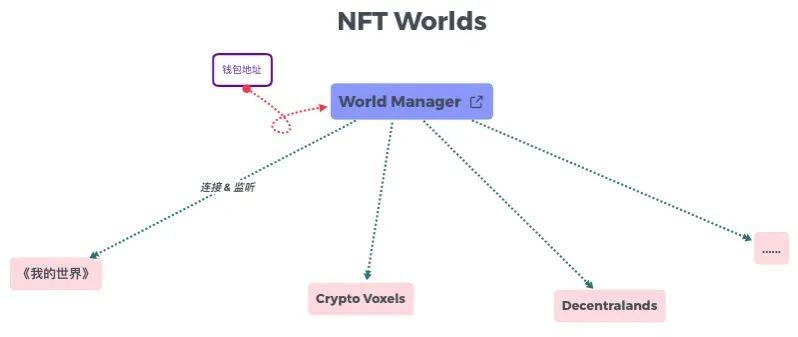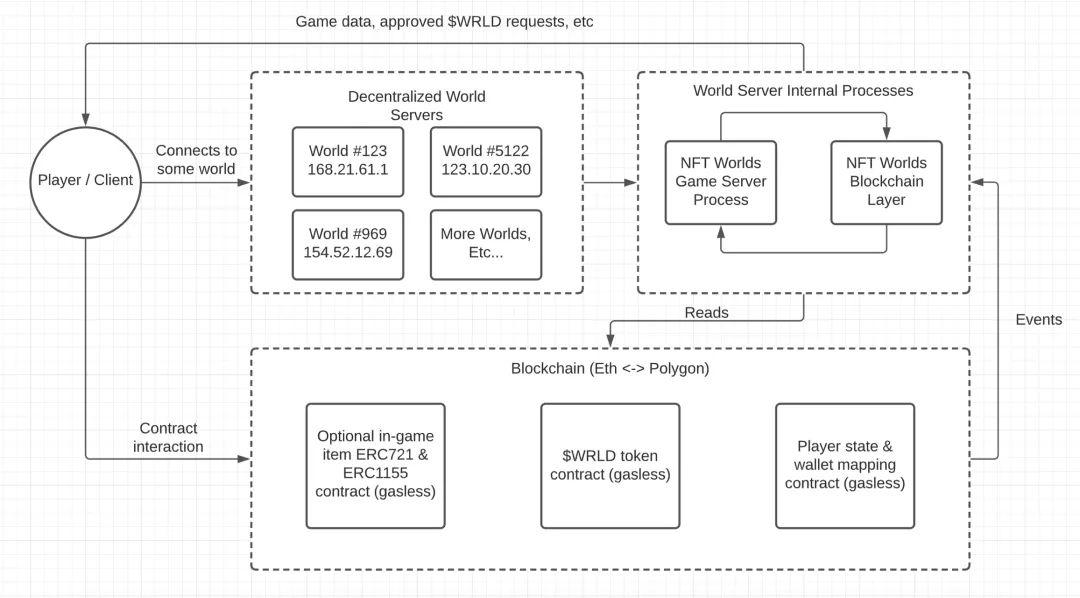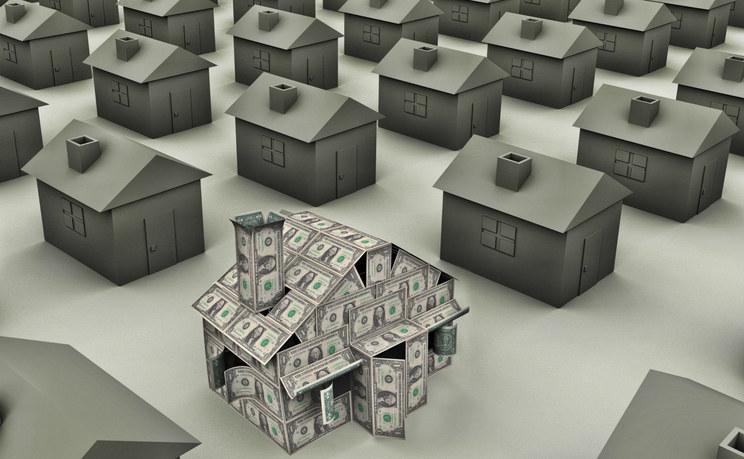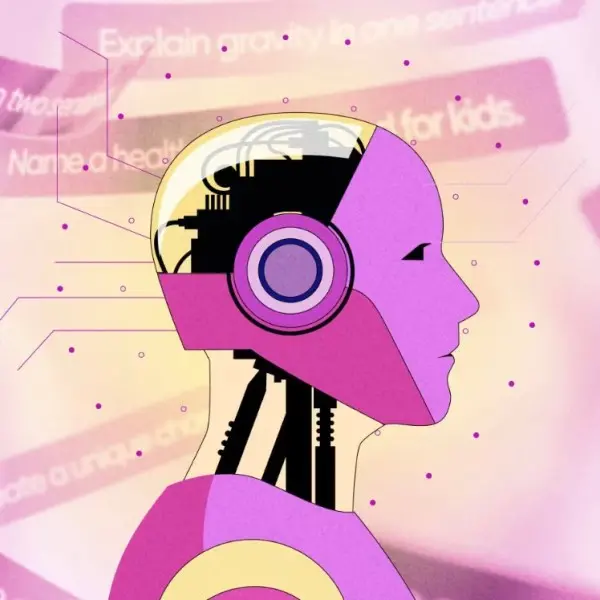一文了解NFT Worlds:寄生于Minecraft,开创元宇宙新模式
翻译/撰稿:龙犄角
审核:Sloth Run, KC
一、什么是NFT Worlds?
NFT Worlds是一个完全去中心化的大型多人(MMO)的元宇宙游戏(平台)。它基于《我的世界》,由10k个独特的3D像素世界组成,这些像素世界全部按程序生成,具有不同属性。
通过拥有一个NFT世界(world),持有者就拥有了该世界在NFT世界生态系统中的权利,拥有了在该世界中建造和所有东西的能力,拥有了游戏中的体验,等等。世界可以被改造成任何东西,例如制作一款赛车游戏,一款战斗游戏,一款角色扮演游戏,或者两、三种genre混合的游戏,或者一片地图,供其他人玩耍、体验和其他。所有这些都在一个大规模的多人游戏环境中进行。
一方面,使用《我的世界》作为基建使玩家得以:
-
快速上手,《我的世界》是早已火遍全球的、开放世界沙盒游戏,自带数十亿玩家用户群体及社区;
-
通过多平台访问NFT Worlds(PC、X Box、Nintendo Switch、PS等);
-
拥有众多开源的MOD、插件、工具,可以拿来即用;
-
任意打造自己的土地(元宇宙),并能够与智能合约、应用程序实时对接。
另一方面,《我的世界》完善的基础设施也使NFT Worlds能够:
-
省去打造全新元宇宙平台的时间、物力、财力和人力等;
-
快速部署MMO游戏体验,并通过一个去中心化的世界名称查询服务器,将世界访问路由到分散的托管地址;
-
自发地吸引“元宇宙建筑师”,即资深的《我的世界》玩家。因为他们完全熟悉这款游戏,完全明白该如何做。
此外,NFT Worlds仅支持通过Java版本《我的世界》进入。众所周知,Java版本尽管画质更差,体验稍逊微软版本的《我的世界》,但这版开发者版本自由度更高,导入MOD和插件也更加便捷。而想要在微软版本中插入MOD的话,需要在X Box或谷歌商店购买素材包。当然,微软版本在另一方面也拥有更高的画质、更灵敏的操作体验等。
二、游戏生态
NFT Worlds的NFT世界基于以太坊链。为求无gas fee,其代币$WRLD除去在以太坊上部署了以外,也部署在了Polygon上。
目前,NFT Worlds已经先行推出了5个官方认证的世界,可供玩家进入玩耍。这几个世界分别是:
NFT Worlds SMP #6233
NFT Worlds官方搭建的《我的世界》测试服,用于测试服务器开发、瓶颈和更新;
The Mothership #9856
Gray Boys母舰(Gray Boys是NFT Worlds的两位创始人发起的一个DAO);
Dino World #3523
NFT项目Bad Baby Dino创建的恐龙世界;
SkuxxVerse #3049
SkuxxVerse(搭建在NFT Worlds上的元宇宙,作为进入该世界的通行证而放出的7777个代币已售完)开发的PvP多人游戏;
MUSE Oraia #9452
Muse DAO创造的探索数字民主、文化和经济的模拟世界MUSE Oraia。
底层机制
NFT Worlds连接用户钱包、NFT Worlds与《我的世界》的方法非常简单。NFT世界的持有者在官网使用World Manager连接钱包地址后,需要将自己购买的NFT Worlds所生成的一串序列号复制并粘贴进用户的《我的世界》账户中的属于自己的一块土地,以完成连接。
当NFT持有者卖出他的土地时,新的序列号也将生成。原本的连接被切断,新的持有者可以重新将这三者连接。
根据NFT Worlds的官方Discord频道,未持有NFT的、单纯的玩家,目前需要通过将世界的服务器地址复制并粘贴进《我的世界》,即可在别人的土地上玩耍。在连接世界的服务器时,会连接玩家的Polygon钱包地址。通过积累玩耍时长,即可赚取NFT Worlds的本地$WRLD代币。
然而,经过实际体验后,发现目前推出的5个世界中,尚未有连接钱包地址功能。普通的游客仅仅需要打开《我的世界》、输入NFT Worlds的服务器地址、进入《我的世界》,闲逛、游览,而没有其他任何链上操作。
至于NFT世界的持有者,也只是需要将自己购买世界NFT后生成的该世界服务器地址、钱包和自己的《我的世界》账户连接。
这也意味着,至少从目前来看,除去服务器的名字、地址以外,服务器内可编辑的土地本身也不在链上,仅仅是《我的世界》这个游戏中的土地。
那么,NFT Worlds如何奖励玩家其代币$WLRD呢?通过监听玩家在《我的世界》中的活动的方式。
也就是说,NFT Worlds充当的角色是一个门户入口。玩家通过NFT Worlds进入了《我的世界》,在《我的世界》的土地上进行搭建、玩耍,NFT Worlds本身并无类似Crypto Voxels的实际的一块土地。
这意味着,NFT Worlds可以“寄生”在不同的平台上,而不仅仅局限于《我的世界》。

对于目前的、基于《我的世界》的NFT Worlds来说,通过World Manager这个入口进入可编辑的土地区域,玩家真正在玩的仍旧是《我的世界》这个游戏,而NFT Worlds只是在其之上搭建了一套经济体系、发行了代币$WRLD,这使得玩家们能够边玩边赚。
从某种程度来说,NFT Worlds的NFT只是美术及外观上的“皮肤”、效果图,实际的、可编辑的土地仍旧是《我的世界》里的。
那么,如果NFT Worlds的底层完全依赖《我的世界》,其NFT及代币的价值是如何改变的?
NFT Worlds依赖流量使其代币$WRLD升值。随着人们对NFT Worlds的关注度增加、其流量增加,人们对NFT世界的需求增大,其价格就会上升。由于$WRLD是其经济模型中的主要流通代币,可用来购买资产、交换不同世界的本地代币等。
随着人们对$WRLD的需求增加,当发币供不应求时,ETH与$WRLD的等价估量就会出现。这时,就会有人更加倾向于使用ETH购买$WRLD,而不是靠做任务、开垦世界,只能缓慢地获取。这样一来,$WRLD的价格也会上升。
链上交互

首先,所有的NFT都是以大量的链上数据创建的。这些数据在mint时被提交到区块链上。它是不可改变的,代表了一个世界的基线状态(即不同的数值、稀有特性等),供其他开发者用dApps、代币等在上面创建新的图层。
值得注意的是,NFT Worlds发行的NFT土地在区块链上,但真正的土地实则是《我的世界》的,并不在链上。例如,如果玩家在Cryopto Voxels内购买并搭建一块土地,那块土地真真切切地出现在Cryopto Voxels内,玩家可以看到那块土地,操纵Avatar在其上走来走去、跑来跑去。
但对NFT Worlds来说,其NFT无法编辑,持有者仅仅能够进入一个预览界面查看土地的地貌、环境等,而不能在其中活动、与土地互动,或是编辑那块土地(挖地、建房子等)。真正可编辑的是《我的世界》中的土地。
此外,如果玩家想要去到其他的世界参加限时活动(例如一场狂欢节),一个世界可以作为“交通枢纽”,将玩家传送至不同世界。而玩家也将免gas fee获得一张通行证NFT,以确保Ta可以登陆其他世界、参加活动。而对于在不同世界间穿梭的玩家来说,人们的实时状态随时在改变。
如果玩家的信息只能储存在一个世界中,当登陆其他世界时,该世界的玩家便无法获得这个“外来者”的玩家简介、状态、任务和成就等公开信息。为实现跨世界的玩家信息实时读取,NFT Worlds将通过接入API的方式把每个玩家的这些数据都写入区块链。
三、游戏交互
玩家间互动
由于NFT Worlds的底层在《我的世界》里,对Web3.0不很熟悉的《我的世界》原生玩家占据了不小的玩家群体比例。此外,对NFT地产感兴趣、资深的元宇宙玩家也是受众之一。但就像先前提到的,由于NFT Worlds只是一个入口、一个链,这些元宇宙玩家们同样也是《我的世界》游戏玩家。
玩家在NFT Worlds中的资产可以分为两部分。
首先,是NFT Worlds官方提供的NFT和本地代币:世界和$WRLD。玩家主要可以通过两种方式获得世界:其一,在二级市场OS上购买土地;其二,向NFT Worlds官方租借世界。玩家将拥有该世界完全的使用权,并定期支付$WRLD作为租金。至于$WRLD代币,它被同时部署在以太坊和Polygon链上。可以通过P2E来赚取。
其次,NFT世界的持有者可以在各自的世界中发行自己的世界本地代币,但使用$WRLD以外的代币进行交易需要支付gas fee。不过NFT Worlds支持NFT玩家自建代币交换池,将不同世界的本地代币与NFT Worlds官方发行的$WRLD进行交换。
游戏体验
目前,可供玩家玩耍的有几方面。
在购买世界(即NFT Worlds发行的NFT)后,NFT持有者可以通过两种途径开荒。当然,有能力的、有耐心的世界NFT持有者可以自己开荒。其次,持有者可以雇佣NFT Worlds官方认证的世界建造者,帮助自己把初始版本和游戏性搭建好,直接跳过开荒时期。
除去NFT世界持有者可以搭建自己的世界外,玩家(不论是否持有NFT世界)可通过《我的世界》进入其他玩家搭建的、开放的世界,进行玩耍。
NFT持有者也可以创造公开的、供其他玩家游戏的世界,并直接对外开放、发行——即,持有者可以在NFT Worlds里制作自己的游戏。
此外,世界创造者能够创建无限数量的 “传送门”。只要玩家与其中一个传送门互动,玩家就会被传送到另一个世界,并在该世界中获得一个确切的位置坐标。
这可以实现世界创造者之间的跨世界合作、相互联系的世界系统(例如联盟);并且能够创造更多未来可能性:作为通往其他世界的“枢纽/运输站”的世界的诞生,以及玩家在NFT世界生态系统中所有世界的顺利探索。
系统提供给了玩家什么?
NFT Worlds官方向玩家提供诸多服务。除去已经提到的“世界租赁”及“代肝开荒”服务,在开放世界、发行游戏方面,如果NFT持有者无法自行完成发行过程中的技术性工作,可以与NFT Worlds官方认证的开发者合作,实现在不同平台和系统的发行功能。
在后续,NFT Worlds也计划推出官方的自动化游戏发行托管服务,无需NFT持有者借助外界资源,即可实现一键发行。
当NFT Worlds官方本身提供NFT世界的租赁服务和技术性服务时,创始团队并不需要自己组织玩家社区、经营玩家生态。例如YGG看准Axie Infinity,创建社区并推出了系统性的租赁流程与老带新教学等,并投资了其他的链游。
但,就像先前提到的,玩家可以向NFT Worlds官方以$WRLD为租金租借世界的使用权和打造权。而如果NFT世界的持有者是对《我的世界》这样的游戏零基础的小白,开垦荒地较为吃力,可以寻求官方认证的《我的世界》建筑师的合作与帮助。
除此之外,便是《我的世界》这一开放性沙盒游戏平台。玩家可以自由探索地图、玩耍、搭建,也可以通过搭入不同MOD和插件等方式进行改造和拓展。
四、外部社区关联
此外,除去个人持有者和个人玩家,NFT(例如Azuki这样的项目)、DAO等以组织为单位的团体也能够通过NFT Worlds发展自己的社区。
首先,NFT Worlds支持NFT持有者(可能是某个NFT项目的官方,或是某个DAO组织中的核心团队方,等等)验证前来的玩家对不同NFT(ERC721或ERC1155)的所有权。
例如,持有者可以快速查看加入其世界的玩家是否持有某个系列的NFT、持有多少、以及是否持有某个系列的特定NFT。
根据人们拥有或未拥有的东西,世界的持有者可以在游戏中实时分配给他们权限、福利、内容等不同权益。
而另一方面,从进入世界玩耍、互动和体验的持有特定NFT的个人玩家的角度来看,这是正向的激励。NFT持有者希望公开帮助其参与的项目的元宇宙成长,并为其带来更多玩家。反过来,元宇宙的增长为扩展游戏模式、内容和更多内容提供了更多机会——这也增加了NFT项目的整体影响力和社区成员。
五、团队
NFT Worlds由拥有超过10年的《我的世界》合作从业经验的@iamarkdev、@Temptranquil创始。
他们的目标是打造完全去中心化的平台,将创作的门槛放低。每个世界都能够提供独特的游戏机制、体验、P2E、社区聚会,等等。世界的持有者(创造者)可以随心所欲地创造其所拥有的世界,并且其他完全能够自由地造访,在不同的世界玩耍。
Roadmap

结语
NFT Worlds发行的NFT在以太坊链上,搭建所用的土地在《我的世界》上,它仅仅控制World Manager以将三方进行连接。NFT Worlds很巧妙地在传统的Web 2.0游戏(例如它所基于的早已积累众多玩家和社区游戏《我的世界》)之上为其建立了经济体系,使原本的玩家可以实现边玩边赚。
实际上,建立一个门户、进行监听以进行P2E机制的运转是不难的。NFT Worlds在很大程度上也依赖着《我的世界》的原生玩家群体。
很显然,《我的世界》也拿它没办法。在NFT Worlds的官网,底部的一行小字也表示:NFT Worlds与《我的世界》、Mojang、微软或任何相关方没有任何关联,也没有得到他们的认可或达成合作伙伴。









